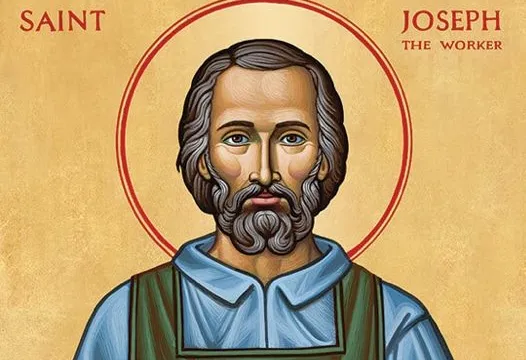Ancient Art and Symbols: From Egyptian Gods to Modern Designs
1. Introduction to Symbols in Ancient Art and Their Significance
Throughout human history, symbols have served as a fundamental means of communication, allowing cultures to convey complex ideas, religious beliefs, and societal values beyond spoken language. These visual signs acted as a universal language, transcending generations and borders, and played a crucial role in shaping cultural identity.
As civilizations evolved, so did their symbolic systems, gradually transitioning from purely religious or ritualistic uses to more refined visual languages that influence modern design and branding. This article explores the fascinating journey of symbols from their origins in ancient Egypt to their reinterpretation in contemporary contexts, demonstrating their enduring significance and versatility.
2. The Origins and Function of Symbols in Ancient Civilizations
Ancient societies used symbols as representations of divine forces, natural phenomena, and societal structures. For example, early humans sketched cave paintings and carved symbols into stone to depict their understanding of the world and to invoke protection or favor from gods.
In religious rituals, symbols often held sacred status, acting as conduits for divine communication. Daily life was intertwined with symbolic systems that encoded social hierarchy, economic transactions, and cosmological beliefs. Beyond Egypt, civilizations such as Mesopotamia, the Indus Valley, and Mesoamerica developed their own symbolic languages, like cuneiform, seals, and hieroglyphs, each serving as repositories of knowledge and spiritual insight.
3. The Egyptian Pantheon and Its Symbolic Language
a. Overview of Egyptian gods and their associated symbols
Egyptian deities were intricately linked with specific symbols that conveyed their divine attributes. For instance, Osiris was often depicted with the crook and flail, representing kingship and authority, while Hathor was associated with the cow, symbolizing nourishment and motherhood.
b. The importance of the Eye of Horus in Egyptian mythology and culture
One of the most iconic symbols from Egypt is the Eye of Horus, representing protection, health, and restoration. According to myth, Horus’s eye was injured and subsequently healed, symbolizing healing and divine power. This symbol was widely used in amulets, jewelry, and funerary rites to safeguard individuals and ensure spiritual protection.
c. Mathematical aspects of Egyptian symbolism: fractions and numerology
The Egyptians integrated their symbols into mathematical systems, notably in their use of fractions. The Eye of Horus itself is a fascinating example, representing a series of fractions that sum to nearly one (63/64), embodying concepts of completeness and balance. This numerological aspect underscores how symbols also encoded complex knowledge, blending spirituality with practical science.
4. The Development of Symbolic Art Through Time
As civilizations interacted and evolved, so did their artistic expressions. From Egyptian hieroglyphs to Mesopotamian cuneiform and later Greek motifs, symbols served as continuity links, preserving cultural identity amidst changing artistic styles.
Many symbols, such as geometric motifs or mythological figures, have persisted through millennia, becoming universal emblems. Their enduring nature highlights their deep-rooted significance in human cognition and storytelling.
5. The Scientific and Practical Aspects of Ancient Symbols
Beyond their spiritual and artistic roles, ancient symbols encoded practical information. For example, the Egyptian calendar was based on the heliacal rising of Sirius, and symbols on papyrus and artifacts preserved this astronomical knowledge across generations.
Materials like papyrus, stone, and clay proved durable, ensuring the survival of symbolic knowledge for thousands of years. These symbols also appeared on everyday tools, jewelry, and architecture, integrating seamlessly into daily life and technological advancements.
6. From Sacred Symbols to Modern Design: Continuity and Transformation
Ancient symbols continue to influence contemporary art, branding, and design. Their timeless qualities make them ideal for creating logos, emblems, and visual motifs that evoke trust, power, or protection. For example, the full details of how symbols like the Eye of Horus are reinterpreted in modern products demonstrate this ongoing legacy.
In digital media and fashion, ancient motifs are often stylized or abstracted, allowing their meanings to resonate across cultures and generations, illustrating the adaptability of symbolic language.
7. Non-Obvious Dimensions of Ancient Symbols
Many symbols harbor hidden meanings, such as numerology or esoteric knowledge. The fractions represented by the Eye of Horus, for instance, encode a spiritual completeness that extends beyond literal interpretation.
Cross-cultural comparisons reveal similar symbols with shared meanings, like the lotus flower in Egypt and India symbolizing purity and rebirth. These parallels highlight how universal themes are embedded in diverse symbolic systems.
Psychologically, symbols evoke subconscious recognition, influencing perceptions and behaviors—an effect leveraged in modern branding and marketing strategies.
8. The Educational Value of Studying Ancient Symbols
Studying symbols provides insights into history, culture, and human cognition, revealing how early societies conceptualized their universe. Engaging with symbols like the Eye of Horus can help students grasp ancient worldviews and their influence on contemporary thought.
Understanding symbolism enhances appreciation for art and design, fostering deeper connections between visual language and cultural identity. Incorporating these symbols into educational curricula enriches learning and preserves cultural heritage.
9. Challenges and Future Directions in the Study of Ancient Symbols
Deciphering lost or obscure symbols remains a challenge, especially where archaeological context is limited. Advances in technology, such as digital reconstruction and artificial intelligence, are transforming research, enabling more accurate interpretations and rediscoveries.
Promoting cultural heritage through modern reinterpretations ensures these symbols remain relevant, fostering cross-cultural understanding and appreciation for ancient knowledge systems.
10. Conclusion: Bridging Ancient Art and Symbols with Contemporary Understanding
The legacy of ancient symbols endures, illustrating human creativity and universal themes that continue to inspire. Symbols like the Eye of Horus exemplify this bridge between past and present, serving as reminders of our shared history and collective identity.
By exploring and understanding these symbols, we deepen our appreciation for art, culture, and human cognition, encouraging ongoing discovery and reinterpretation. Such exploration not only preserves heritage but also enriches modern design and communication—demonstrating that the language of symbols remains timeless.
